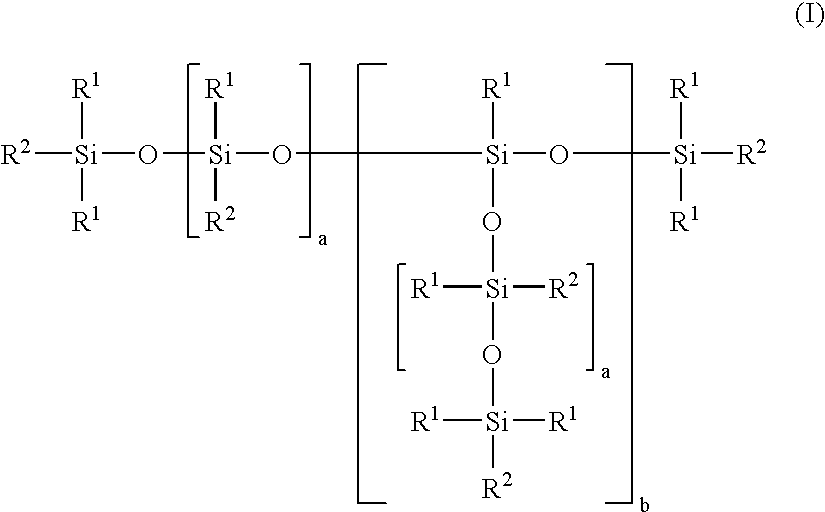Organopolysiloxanes for defoaming aqueous systems
a technology of organic polysiloxanes and aqueous systems, which is applied in the direction of liquid degasification, separation processes, and other chemical processes, can solve the problems of inability to be very effective, adverse effects, and impaired esthetics and physical properties of final coatings, and achieves rapid foam collapse and improved balan
- Summary
- Abstract
- Description
- Claims
- Application Information
AI Technical Summary
Benefits of technology
Problems solved by technology
Method used
Image
Examples
examples
In the examples below the preparation of organofunctionally modified organopolysiloxanes for use in accordance with the invention, of the formula I, is shown first of all.
The products prepared in these examples are designated E1 to E7.
example e1
In a 250 ml four-necked flask equipped with KPG stirrer, dropping funnel, intensive condenser and nitrogen blanketing 51.15 g of Golpanol® BEO (butynediol etherified with about 1.1 mol of ethylene oxide) together with 11.0 g of a pendant hydrogen siloxane (SiH content: 4.62 eq / kg) were heated to 140° C. with stirring and a catalyst consisting of H2PtCl6.6H2O and RuCl3.H2O in isopropanol (corresponding to 10 ppm of Pt and 10 ppm of Ru based on the overall batch) was added. Within a few minutes the SiC linking reaction began, the exothermic nature of which reaction was intensified by successive dropwise addition of the major amount of S1H-siloxane (44 g) for about 50 to 60 minutes. After around just 20 minutes the result of volumetric gas analysis on a sample was evidence of quantitative SiH conversion.
A clear, amber-colored liquid having a viscosity of 639 mPas at 25° C. was isolated.
example e2
Following the procedure of Example 1, 42.52 g of Golpanol BEO together with 12.0 g of a pendant hydrogen siloxane (SiH content: 3.52 eq / kg) were heated to 140° C. with stirring and a catalyst consisting of H2PtCl6.6H2O and RuCl3.H2O in isopropanol (corresponding to 10 ppm of Pt and 10 ppm of Ru based on the overall batch) was added. The remaining amount of SiH siloxane (48 g) was added dropwise within 60 minutes. At the end of dropwise addition the SiH conversion determined from volumetric gas analysis was quantitative.
The reaction mixture was cooled to give a clear, amber-colored liquid having a viscosity of 896 mPas at 25° C.
PUM
| Property | Measurement | Unit |
|---|---|---|
| solubility | aaaaa | aaaaa |
| structure | aaaaa | aaaaa |
| water solubility | aaaaa | aaaaa |
Abstract
Description
Claims
Application Information
 Login to View More
Login to View More - R&D
- Intellectual Property
- Life Sciences
- Materials
- Tech Scout
- Unparalleled Data Quality
- Higher Quality Content
- 60% Fewer Hallucinations
Browse by: Latest US Patents, China's latest patents, Technical Efficacy Thesaurus, Application Domain, Technology Topic, Popular Technical Reports.
© 2025 PatSnap. All rights reserved.Legal|Privacy policy|Modern Slavery Act Transparency Statement|Sitemap|About US| Contact US: help@patsnap.com



